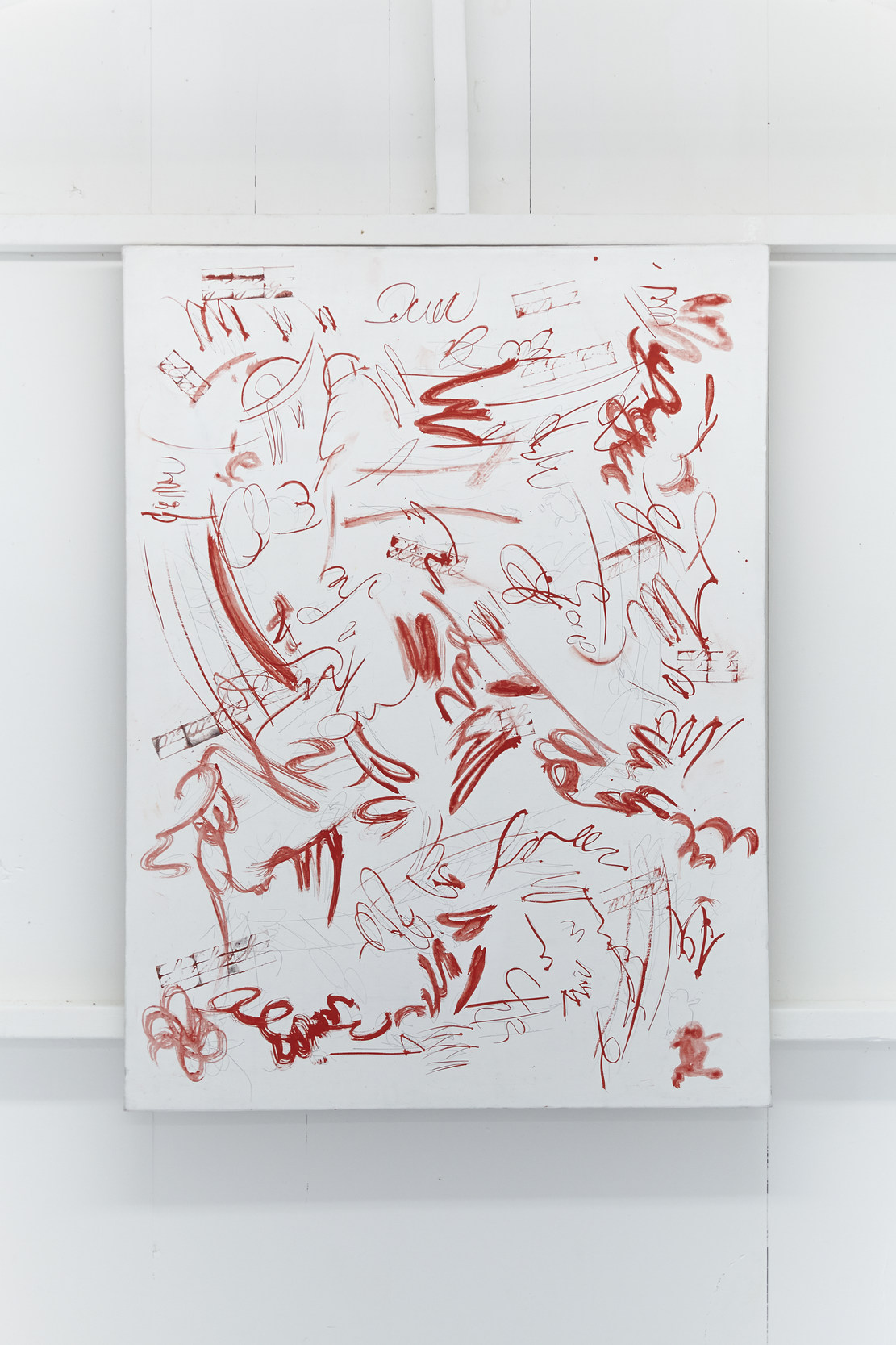Artist: Sofia Leiby
Exhibition title: Arcades and Garlands
Venue: East Hampton Shed, New York, US
Date: July 18 – August 15, 2015
Photography: images copyright and courtesy of the artist and East Hampton Shed, New York
What I meant when I said your work reminded me of a big ball of violence.
by Max Guy
Sofia,
Your paintings conjure in me statements and questions both equally enigmatic and idiotic. In my notes I have “Is Abex still allegorical?” We had brief arguments on the definition of idiosyncratic that lead me to thinking about everything from topography to the ‘way of the samurai.’ Our conversations always seem to verge on something nebulous so before we float away, I’d like to start from the beginning – to different cloud.
A few months ago Kristina Lee posted a link on her blog to an encyclopedia entry on the “big ball of violence,” a trope in cartooning used as a stand in for a fight. The “big ball” is generally an opaque dust cloud from which fling various motifs – stars, exclamation points, shoes, spirals. On occasion the ball begins to roll and capture objects from its surround; the entry namely mentions cats. We can infer many things from the “big ball.” Within it might be a scene too violent for the eyes of a child, too detailed for the budget of the cartoon studio. Perhaps a scene of such complexity is better left to the imagination. I sent this link to you but never elucidated on the idea.
The “big ball” invoked the violent and explosive potential contained by your painting. It is less figurative than a dust cloud produced by bodies impacting one another than it is gestural, as is combustion. I’ve thought about the paintings as engines – explosive, reactive, locomotive. You send me articles on learning to write cursive but I am preoccupied trying to make an analogy of unlearning to nuclear fusion. Something about the practice of learning cursive, tracing within the contours of other artist’s work reminds me that you are giving pen tests and cursive manuals new “gestural” weight – like stars fusing hydrogen to helium. There is a meeting of your hand with that of others, and a reaction occurs in which gestures are altered on an atomic level.
It follows that your paintings fluctuate between dense and incredibly light fields of color, arcades and garlands that work as sparks and flares. You harness the samples’ potential energy and propel yourself, approaching each mark methodically, regardless of its worldliness or naïveté. Some lines take more time, but the mesh of a silkscreen, or the translucence of a sheet of vellum filters them all. While looking at one of your recent paintings, Hard Lines, I refer to the list of terms you sent me at http://www.handwritinginsights.com. I’m searching for the of stoicism, receptiveness, clear thought, confusion, poor organization of time and space embedded in each line. As the size of letters within a word diminish, they become the active line, the sinuous stroke.
But what was that bit about the samurai from before? I mentioned it because it seems fitting that a painter today might perform as rōnin – a master-less samurai. Literally translated as “wave-man,” the rōnin is left afloat to their own devices. One rōnin, Yamamoto Tsunetomo, wrote that the way of the samurai is one of death – that the samurai is liberated in the acceptance of this way. It made me optimistic about that old statement that painting is dead. One of my favorite jidaigeki (in Japanese cinema these are period pieces) is the Samurai Trilogy, which tells the tale of Musashi Miyamoto, the greatest samurai of all time and also rōnin. Even when he wasn’t practicing his swordsmanship he was learning. Carving small sculptures of the Buddha and practicing carpentry until finally he defeats an opponent with a wooden sword carved from an oar on the boat ride to the duel.
Tracing and printing are acts of emulation, of learning and progress. There are rules to writing cursive that you teach yourself and follow. They’re acts of repetition, performativity as you’ve said before. It occurs to me that your paintings are successive like a cursive script; gestures continue from one work into the next. As rōnin, you are your own master; I like how you teach yourself.
Keep going,
Max




